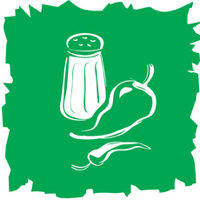Receta Lancashire Hot Pot
And proud I am, as this is one of the meals that makes me all fuzzily sentimental for my youth. Lancashire Hot Pot, the banquet of the masses, designed to feed a crowd cheaply and healthily after a long day in the fields, or down a pit, or up a chimney or any other places that grainy pictures of the industrial north might take you to. However, it is not as grim up north as people might think when you have this to come home to. For me, hot pot goes hand in hand with winter, the fire in the grate, a table full of chattering hungry mouths.
Whilst teaching might be my industry now, I am as happy to see the scalloped, pretty top of a hot pot as my ancestors probably were. Indeed when I was small, this was the best bit, the thin potato, crisped at the edges by the heat of the oven, their soft underbellies braised and flavoured by lamb stock. And unbelievably once upon a time it used to be usual to put oysters in a hot pot, when oysters were a food of the poor. How times change.
This is my version, enhanced by years of Lancastrian blood, not necessarily the same as next door's version, or the one that they cook the other side of town. Like all dishes with heritage, the original has been copied, then tweaked, the re-tweaked as the years have gone by. But, it's good. Really good. And you must serve pickled red cabbage with it. And thick crusty well buttered bread. This is not a time for refined dining; just pull up a chair, dig in and fill your boots. You're most welcome.
Ingredientes
- Ingredients
- Olive oil (or butter if you're so inclined)
- 50g well seasoned plain flour
- 600g stewing lamb (neck, chop, leg...) cubed or cut into bitesize chunks
- two onions, sliced
- 4 carrots, roughly chunked
- 1/2 swede, chunked
- 8 - 12 potatoes, depending on size, some quartered for the stew, the rest sliced about half a centimetre thick to decorate the top
- a few dashes of Worcestershire sauce
- about 500ml lamb stock (I make a strong stock from two stock cubes)
- salt and pepper
Direcciones
- Take the lamb and cover the chunks in the seasoned flour. In a suitable pot or large frying pan fry off the lamb in batches until well browned on all sides. Remove to a plate and repeat the procedure until all the lamb has been browned. You will probably have to add a bit of oil after each batch.
- Add the onions to the dish and any seasoned flour that is left. Fry off the onions briskly, scraping up any brown bits from the bottom of the pan as the onions release their juices. Cook the onions until starting to soften but only expect to see a slight browning on the edges of the onion slices.
- Note: If you are using a frying pan I would suggest that you transfer the contents of the frying pan to your casserole dish at this stage, then add the stock to the frying pan to deglaze it before then pouring that into the casserole dish. If you have a dutch oven or cast iron pot then carry on using the method below. Casserole dish users: Follow the method below but don't put the stock in as indicated below, as you have already done it!
- Return the meat and its juices to the pan
- Add the carrots and the swede, lower the heat, mix and cook for about five minutes, then add the quartered potatoes. Mix and cook for a couple of minutes.
- Add the stock. It should only come up to the level of the vegetable and meat; no more. Add a few dashes of Worcestershire sauce (I put in about 10 because I like the warmth it gives) and add salt and pepper. Give the stew a stir.
- Preheat the oven to 180c
- Top the stew with the remaining potatoes in a circular motion, layering each piece of potato on the one before. When you have completed the layering, season generously with salt and pepper.
- Cover the casserole and place in the oven for about two hours, though check from time to time. You can usually smell it when it's done. You could obviously cook this slower at a lower temperature.
- For the last 20 minutes of cooking, remove the lid and return to the oven to allow the top to colour up.
- When you remove the stew from the oven, let it rest for a few minutes as it will be extremely hot.
- Serve in bowls with lashings of pickled red cabbage, or beetroot, and plenty of crusty bread and butter to mop up the juices.
- Glorious! And if you have leftovers, even better the next day!
- For pictures, visit my blog, http://lolaandfinn.blogspot.com/2012/01/lancastrian-and-proud-lancashire-hot.html



